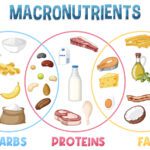Introduction
When it comes to improving fitness, burning fat, and building a stronger body, two popular training styles dominate the conversation: HIIT (High-Intensity Interval Training) and Strength Training. Both offer unique benefits, but which one should you choose?
This article breaks down the key differences between HIIT and strength training, explores their pros and cons, and helps you decide which fits your goals, schedule, and lifestyle.
What Is HIIT?
HIIT stands for High-Intensity Interval Training. It’s a training method that alternates short bursts of intense activity with brief recovery periods.
🏃 Example:
- 30 seconds of jump squats
- 15 seconds rest
- Repeat for 15–30 minutes
The idea is to push your heart rate up, then allow it to recover briefly before going hard again. Most HIIT sessions last 15–30 minutes and require minimal equipment.
What Is Strength Training?
Strength training, also known as resistance training or weightlifting, focuses on building muscle and improving strength by challenging your muscles with resistance. This can include bodyweight exercises, dumbbells, barbells, resistance bands, or machines.
🏋️ Example:
- 3 sets of 10 squats with weights
- Rest 60–90 seconds between sets
Workouts typically focus on controlled movements, proper form, and progressive overload.
Key Differences Between HIIT and Strength Training
| Feature | HIIT | Strength Training |
| Duration | 15–30 minutes | 30–60 minutes |
| Focus | Cardio, calorie burn | Muscle growth, strength |
| Intensity | High (short bursts) | Moderate to heavy resistance |
| Rest Time | Very short | Longer, 1–3 minutes |
| Equipment Needed | Often bodyweight | Weights or resistance bands |
| Recovery Time | Moderate | Higher, due to muscle fatigue |
Benefits of HIIT
- 🔥 Burns more calories in less time
- ⏱️ Time-efficient for busy schedules
- ❤️ Improves cardiovascular fitness
- 🧠 Boosts metabolism for hours post-workout
- 🏠 Can be done at home with no equipment
➤ Ideal for:
- Fat loss
- Improving endurance
- Quick home workouts
Benefits of Strength Training
- 💪 Builds lean muscle mass
- 🧠 Boosts metabolism long term (muscle burns more calories)
- 🦴 Improves bone density and joint health
- 🔋 Enhances strength, posture, and functional movement
- 🧘 Helps regulate hormones and improve mood
➤ Ideal for:
- Muscle gain or toning
- Long-term fat loss
- Strength and performance goals

HIIT vs Strength Training for Fat Loss
If your primary goal is losing fat, both methods are effective — but in different ways.
- HIIT burns more calories during the workout
- Strength training increases resting metabolism by building muscle
- Best results often come from combining the two: 2–3 days of strength + 1–2 HIIT sessions
✅ Tip: Avoid overdoing HIIT. Too much high-intensity work can lead to fatigue, poor recovery, and plateauing results.
How to Choose Based on Your Goal
🎯 Your Goal: Weight Loss
➡️ Start with 2–3 strength training days + 1–2 short HIIT sessions
🎯 Your Goal: Muscle Gain
➡️ Focus on strength training 3–5x per week. Add light cardio or HIIT sparingly.
🎯 Your Goal: General Fitness or Endurance
➡️ Combine both with flexibility: 2–3 strength sessions, 1–2 HIIT/cardio days
Common Mistakes to Avoid
- ❌ Doing HIIT every day with no recovery
- ❌ Lifting with poor form or no progression
- ❌ Ignoring protein or nutrition support
- ❌ Choosing a workout style you hate (consistency matters more!)
Conclusion
So, HIIT vs strength training — which wins?
The truth is, both are excellent, and they work even better together. HIIT is great for quick calorie burn and cardio conditioning. Strength training builds lean muscle and long-term metabolism.
Choose the style that aligns with your goals, schedule, and most importantly, what you enjoy. Fitness isn’t one-size-fits-all — it’s about finding what keeps you coming back. 👉 Want to boost your results even more? Read our How to Calculate Maintenance Calories and Set Your Fitness Goals.




Pingback: LISS Workouts for Fat Loss: A Low-Impact Path to Sustainable Results - FitroFuel
Pingback: Benefits of a Deload Week: Why Rest Drives Results - FitroFuel
Pingback: Overcoming Plateaus in Weight Loss: Strategies That Actually Work - FitroFuel
Pingback: Eating Clean on a Budget: Meal Planning for Busy Professionals - FitroFuel